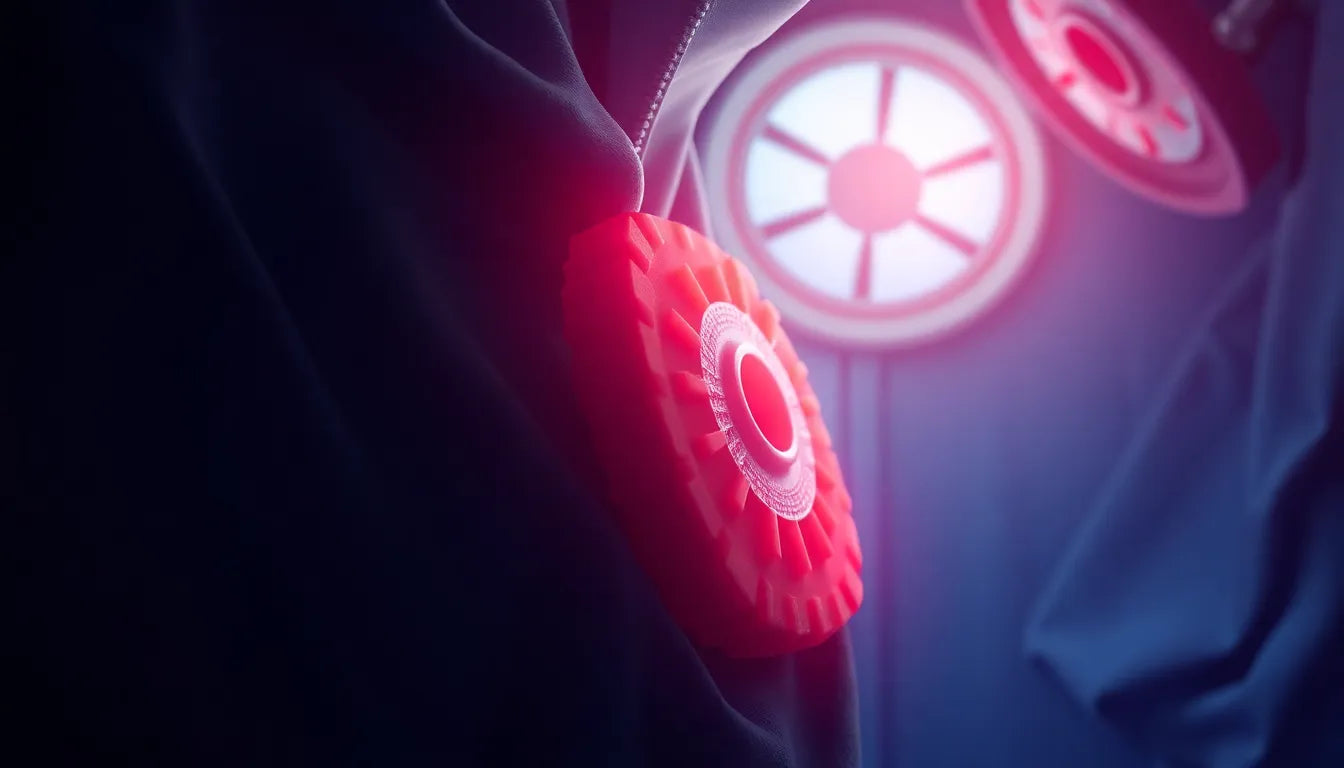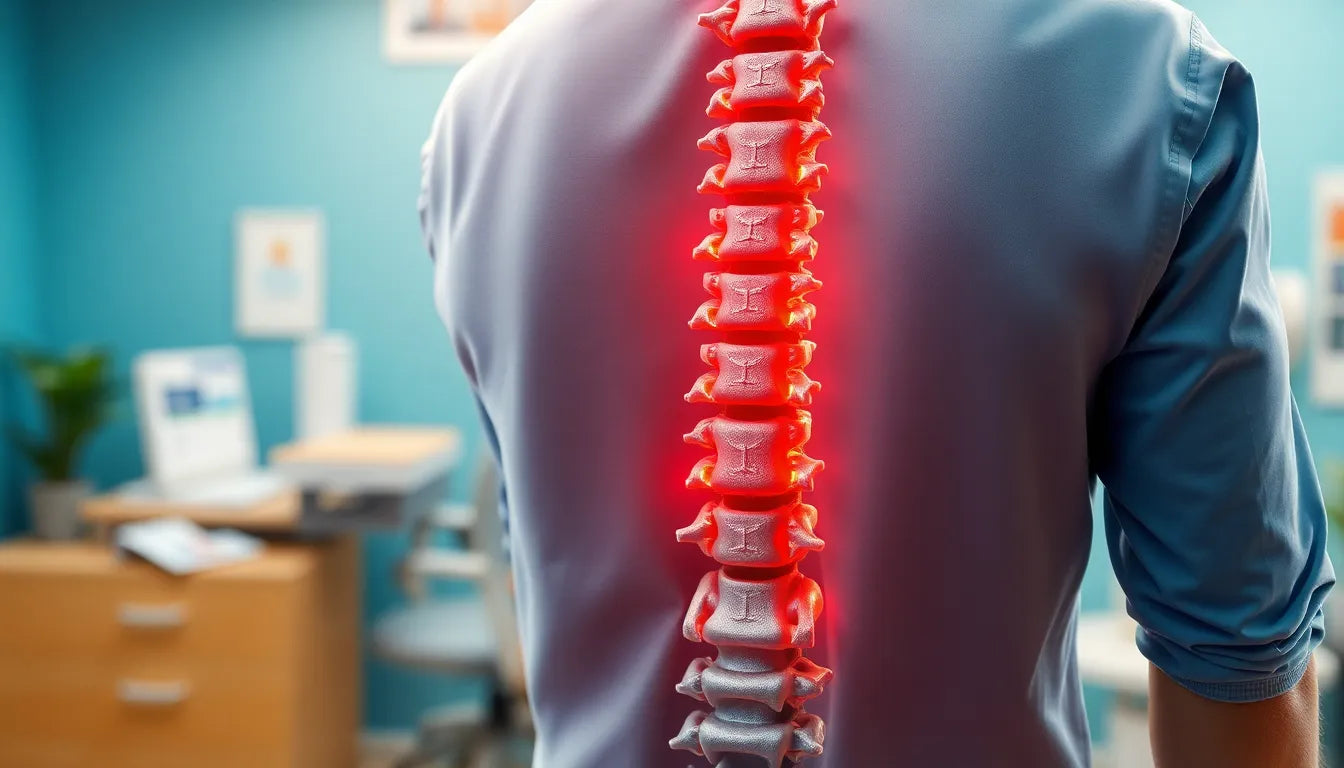Muscle knots are a common yet often misunderstood condition that can significantly impact daily life. Have you ever experienced a persistent ache or tightness in your neck or back that just won't go away? Chances are, you might be dealing with muscle knots. These annoying little nodules, also known as myofascial trigger points, can cause discomfort and limit your range of motion, affecting your overall well-being.
Understanding muscle knots
Muscle knots, or myofascial trigger points, are essentially small, firm lumps that form within the muscle tissue. They occur when muscle fibers or the surrounding fascia (the thin, white connective tissue that wraps around muscles) become tight and tense. This condition is often the result of stress, overuse, or poor posture, leading to restricted blood flow and the accumulation of toxins in the affected area. As a result, the muscle fibers contract and form a knot, which can be both painful and persistent.
The importance of early recognition
Recognizing muscle knots early is crucial in managing pain effectively and preventing further complications. Left untreated, these knots can lead to chronic pain, muscle stiffness, and even referred pain, where the discomfort radiates to other parts of the body. By identifying the signs of muscle knots early, you can take proactive steps to alleviate the pain and improve your quality of life. This might involve simple lifestyle changes, such as improving your posture, incorporating regular stretching exercises, or using ergonomic aids to reduce strain on your muscles.
In the following sections, we'll delve deeper into what muscle knots look like, where they commonly occur, and the symptoms you should be aware of. Understanding these aspects will equip you with the knowledge to tackle muscle knots head-on, ensuring they don't interfere with your daily activities.
appearance of muscle knots
When it comes to identifying muscle knots, their appearance is quite distinct. Typically, muscle knots manifest as small, firm nodules or bumps within the muscle tissue. These knots are not always visible to the naked eye but can be felt as tight, dense areas when you press on the muscle. The texture of a muscle knot is usually firmer than the surrounding muscle tissue, which is why they are often described as feeling like a small lump or bump.
The sensation of touch is a key indicator when identifying muscle knots. They can feel painful or tender, especially when pressure is applied. This tenderness is a result of the muscle fibers constricting and forming a knot, which limits blood flow and causes discomfort. While these knots can vary in size, they are often no larger than a pea. For those looking to visualize muscle knots, diagrams or illustrations can be incredibly helpful. These visual aids can offer insight into how muscle knots form beneath the skin and provide a clearer understanding of their structure.
common locations for muscle knots
Muscle knots can occur in various parts of the body, but some areas are more prone to them than others. The neck and shoulders are particularly susceptible to muscle knots due to stress and poor posture. These areas often bear the brunt of tension, especially for individuals who spend long hours sitting at a desk or working on computers. The constant strain can lead to the development of knots in these muscles.
The back and legs are also common sites for muscle knots, often due to physical activities or a sedentary lifestyle. Engaging in repetitive motions or maintaining the same position for extended periods can cause muscle fibers to tighten and form knots. For a quick reference, here is a table summarizing common locations and associated symptoms:
| Location | Associated Symptoms |
|---|---|
| Neck and Shoulders | Stiffness, tension headaches, restricted movement |
| Back | Localized pain, muscle tightness, limited flexibility |
| Legs | Muscle cramps, soreness, decreased range of motion |
symptoms associated with muscle knots
Recognizing the symptoms associated with muscle knots is crucial for effective management. One of the most common symptoms is localized pain, felt directly at the site of the knot. This pain can range from mild discomfort to severe aching, depending on the size and location of the knot.
Muscle knots can also restrict movement, limiting the range of motion in the affected muscles. This restriction can make everyday activities challenging and may lead to further muscle strain if not addressed. Another symptom to be aware of is referred pain, where the discomfort from a knot can manifest in other areas of the body. For example, a knot in the shoulder may cause pain to radiate down the arm.
Although less common, muscle knots can also cause numbness and tingling. This occurs when the knot compresses nearby nerves, leading to sensations of pins and needles or a loss of feeling in the affected area. Understanding these symptoms can help you identify muscle knots early and seek appropriate treatment to alleviate the discomfort.
Diagnosis and imaging of muscle knots
Diagnosing muscle knots can be challenging due to their subtle nature and the limitations of imaging technology. While MRI scans and other imaging techniques can reveal changes in muscle tissue, they cannot directly visualize muscle knots. This limitation makes it essential to rely on the expertise of healthcare professionals for an accurate diagnosis. Professionals like physical therapists or chiropractors can assess muscle knots through physical examination, identifying the characteristic tightness and tenderness that define these trigger points. Their experience and knowledge are crucial in developing an effective treatment plan tailored to individual needs.
Prevention and management strategies
Preventing muscle knots involves adopting ergonomic solutions and lifestyle adjustments that reduce strain on muscles. Ergonomic aids, such as adjustable chairs and desks, can significantly improve posture and minimize the risk of developing muscle knots, especially for individuals who spend long hours sitting. Additionally, incorporating regular breaks and stretching exercises into your routine can help maintain muscle flexibility and prevent the buildup of tension.
Maintaining a healthy lifestyle is equally important in managing muscle knots. Regular physical activity, balanced nutrition, and adequate hydration support muscle health and reduce the likelihood of knots forming. Stress management techniques, such as yoga or meditation, can also be beneficial in preventing muscle tension that leads to knots.
Frequently Asked Questions
What causes muscle knots?
Muscle knots are commonly caused by stress, poor posture, and repetitive movements. These factors lead to muscle fibers tightening and forming knots, resulting in discomfort and restricted movement.
Can muscle knots go away on their own?
Some muscle knots may resolve with rest and proper care, such as applying heat or engaging in gentle stretching. However, persistent knots might require professional treatment, such as massage or physical therapy, to fully alleviate the symptoms.
How are muscle knots treated?
Treatment for muscle knots often includes massage therapy, physical therapy, and the use of ergonomic aids to improve posture. These methods help relax the affected muscles, increase blood flow, and reduce tension, promoting healing and relief.
Are muscle knots dangerous?
While muscle knots can be uncomfortable, they are generally not dangerous if managed properly. Ignoring them, however, can lead to chronic pain and further complications, so addressing them early is advisable.
How can I prevent muscle knots in the future?
To prevent muscle knots, focus on maintaining good posture, engaging in regular physical activity, and using ergonomic tools to reduce muscle strain. Incorporating stress-reducing activities, such as yoga or meditation, can also help minimize the risk of developing knots.
Sources
- Healthline. (2023). "Muscle Knots: Causes, Symptoms, and Treatment."
- WebMD. (2023). "Understanding Muscle Knots."
- Verywell Health. (2023). "What Are Muscle Knots and How to Treat Them."
- Mayo Clinic. (2023). "Myofascial Pain Syndrome."
- Shah, J. P., & Gilliams, E. A. (2017). "Uncovering the Biochemical Milieu of Myofascial Trigger Points Using in vivo Microdialysis: An Application of Muscle Pain Concepts to Myofascial Pain Syndrome." Journal of Bodywork and Movement Therapies.
- Fernández-de-las-Peñas, C., Simons, D. G., & Cuadrado, M. L. (2007). "The Role of Myofascial Trigger Points in Musculoskeletal Pain Syndromes of the Head and Neck." Current Pain and Headache Reports.























